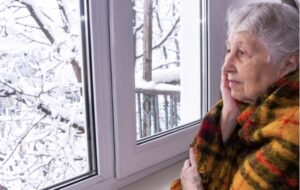It’s common to feel sad or depressed sometimes. These feelings are just a natural part of life, and there are numerous ways to help manage them no matter your age. However, if prolonged periods of sadness and depression tend to coincide with the changing of the seasons, it’s possible that seasonal affective disorder (SAD) could be the culprit.
Now, SAD isn’t feeling upset because it’s snowing on what you’ve hoped to be a clear, sunny day—SAD is a legitimate mental health concern that affects millions of Americans. If left untreated or unaddressed, SAD could lead to serious symptoms involving weight changes, sleep difficulties, or other mental health concerns like anxiety, agitation, and withdrawal.
At Bellaire at Stone Port, we understand how important it is to support our resident’s mental health. We take great care to understand individual needs and provide plenty of ways to help bring people out of the darker moments in life and enjoy the community and people around them.
Today, we’re going to look at SAD, how it affects seniors, and the strategies doctors and researchers recommend to help reduce or even prevent the issue from developing. If you’re wondering how our community can help you or a loved one find more joy in life, please be sure to give us a call today.
What Is SAD?
Seasonal affective disorder, aptly known as SAD, is a form of depression that develops depending on the season.
It usually develops in adults during the fall and winter months, helping it earn the moniker “Winter Blues,” but some people may experience symptoms during the summer. What makes SAD distinctive is how long it lasts and the number of serious depressive symptoms it may display.
SAD can last for up to 4 or 5 months. During that time, people may develop:
- A loss of interest in activities and hobbies
- Difficulty sleeping
- Low energy levels
- Fogginess or sluggishness
- Anxiety and agitation
- Eating problems
- Thoughts of suicide
Can Seasons Affect Symptoms?
Although SAD shares many symptoms with clinical depression, the season it occurs can change the nature of some symptoms.
For example, during the fall and winter months, people with SAD may experience:
- Oversleeping
- Weight gain
- Social isolation or withdrawal
By contrast, people who experience SAD during summer or spring may develop:
- Insomnia
- Lost appetite
- Violent behavior
- Agitation and anxiety
What Could Cause SAD?
While the specific cause is unknown and reasons for developing symptoms can change dramatically between people, some evidence suggests that SAD could develop when there is a chemical imbalance between a person’s melatonin and serotonin levels.
Loss of sunlight, a disruption to circadian rhythms, and vitamin D deficiency could all contribute to this particular chemical imbalance and lead to depression.
SAD in Seniors: Is It More Common?
SAD can develop in anyone, regardless of age or gender. However, some studies have found that women further away from the equator are more likely to develop SAD than men the same distance away. If you live in Alaska or Northern Canada, you may have a higher risk of developing SAD than someone living in Los Angeles or Miami.
However, various mental health disorders can significantly increase the risk of developing SAD, even those associated with aging like Alzheimer’s and dementia.
Preventing & Treating SAD, No Matter the Season
Because SAD is a clinically-proven mental health disorder, you should always consult a doctor when looking for strategies to help manage your symptoms. Even if you believe your symptoms are associated with the changing seasons, you might have other underlying conditions that also affect your mental health.
Doctors can also prescribe medications like antidepressants to help manage SAD symptoms.
That being said, there are several ways you could help reduce or control SAD in yourself or your loved ones. Some of the most common include:
Talk Therapy
Talk therapy, also known as cognitive behavioral therapy (CBT), is a series of sessions that provide a welcoming, understanding environment for people struggling with depression and SAD.
These sessions are usually performed in a group setting where each person is encouraged to talk about their struggles and seek support from their peers. It’s designed to help replace negative thoughts associated with the season with more positive, healthy ones.
Getting More Sun
Sunlight is an essential part of our quality of life. Numerous studies support the relationship between sunlight and positive, happy thinking thanks to the fact that sunlight helps produce vitamin D in our skin, which, in turn, can increase serotonin levels.
However, seasons like winter or fall may prevent people from getting the sunlight they need. Doctors and therapists could recommend a light therapy treatment to help control SAD in these cases.
Vitamin D Supplements
While the sun can help produce vitamin D in our skin, we also consume the vitamin in our foods and drinks. However, if there has been a diet change due to SAD, it can seriously affect our vitamin D levels and possibly lead to vitamin D deficiency.
Adding vitamin D supplements to a daily diet could help manage SAD and bring joy back to everyday living.
How We Can Help
Our mission is to help our residents stay happy, comfortable, and engaged all year long. Even if some residents struggle with SAD or other depression-related issues, we have plenty of resources available to help get them the help they need.
From regularly scheduled outings to routine physician and therapist visits, Bellaire at Stone Port is ready to support and bolster the quality of life of everyone who joins. See how we can help by contacting us today.




